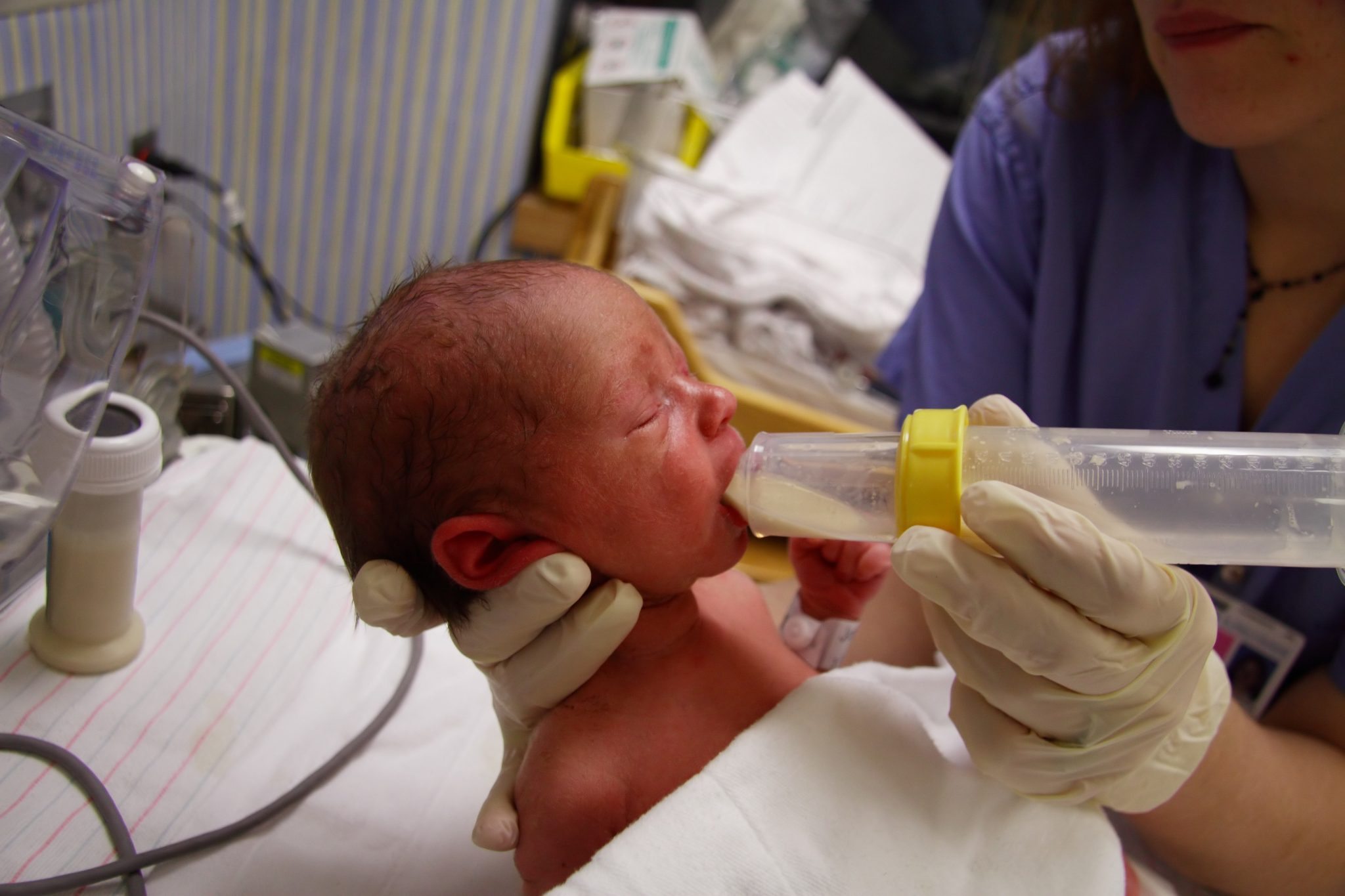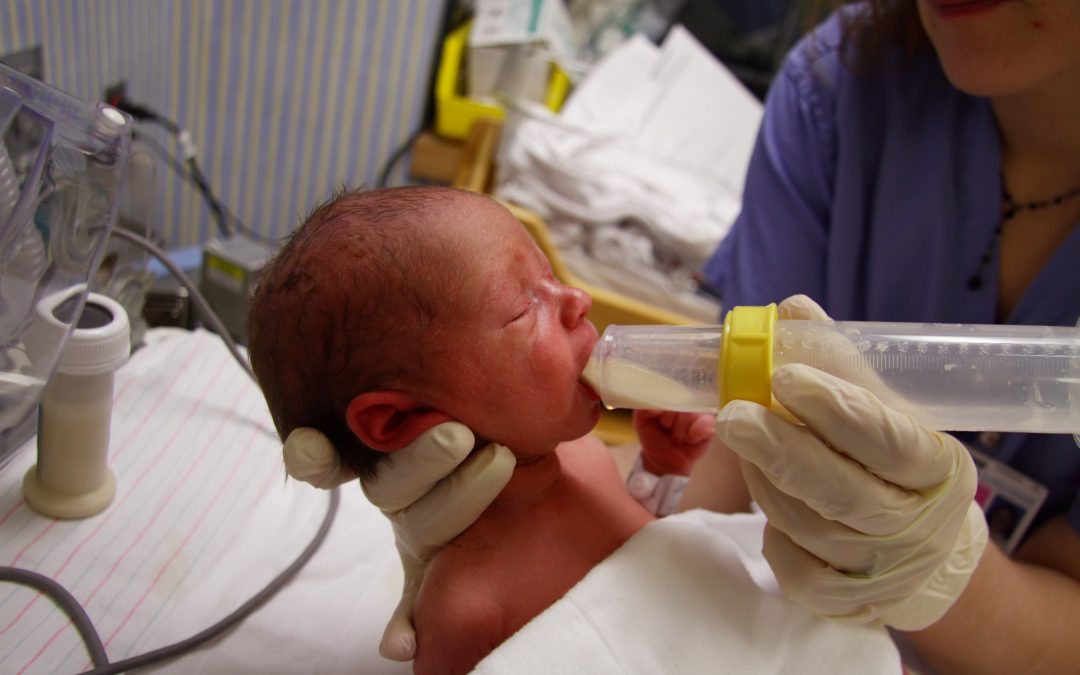
Read time: 3.5 minutes
TL;DR
- If you are having a difficult time getting your baby to latch properly, a nurse or lactation consultant may recommend the use of a nipple shield.
- A nipple shield is a flexible, soft silicone nipple that fits over your nipple and areola that can help your baby latch on properly as you both get used to breastfeeding.
- Research has shown that premature infants who nurse with nipple shields intake more milk than infants who don’t use a nipple shield when nursing.
- Nipple shields can also help transition babies from bottles to breastfeeding.
- Because your baby may not be able to completely drain your breast with the nipple shield, it’s important to use a breast pump after nursing, keeping your milk supply up and reducing the risk of plugged milk ducts.
If you are having a difficult time getting your baby to latch properly, a nurse or lactation consultant may recommend the use of a nipple shield. A nipple shield is a flexible, soft silicone nipple that fits over your nipple and areola. Using a nipple shield can help your baby latch on properly as you both get used to breastfeeding.
When to Use a Nipple Shield
A nipple shield can be helpful for you to use in several situations. These situations include:
- Breastfeeding a baby who is premature, small or ill – The nipple shield holds the nipple in an extended state, which will allow your baby to latch and nurse easier. Research has shown that premature infants who nurse with nipple shields intake more milk than infants who don’t use a nipple shield when nursing.
- Flat or inverted nipples. The nipple shield can help hold inverted or flat nipples in the proper position for the baby to latch on properly.
- Switching babies from bottle to breast – Silicone nipple shields have a similar texture to bottles, providing comfort for babies who refuse or are used to breastfeeding without the aid.
- Cracked or bleeding nipples – An improper latch may traumatize your nipples, making it extremely painful to breastfeed. A nipple shield can help protect sensitive nipples while they heal.
Disadvantages to Using a Nipple Shield
- Your milk supply may decrease as a result of your nipple not being directly stimulated.
- You are at an increased risk of developing blocked milk ducts and mastitis because of decreased milk transfer.
- It can be difficult to wean your baby off of the nipple shield.
Different Types of Shields
Nipple shields are either formed from silicone, latex or rubber. They come in different sizes ranging from small to large. It’s important to choose the proper size in order to fit both your baby’s mouth and your nipple. Some types of nipple shields have a cut out lower portion, which allows more skin-to-skin contact.
Using a Nipple Shield
How to Use a Nipple Shield
Place the shield onto your nipple with the brim of the shield upturned. Once the nipple is in place, smooth out the edges. The will help the shield to stick to your breast. If you still have difficulty in getting the shield to stay properly, try moistening the edges only with a little water. If your nipple doesn’t fit into the shield properly, try the next size up, ensuring that it isn’t too large for your baby’s mouth.
Remember to Pump
Your body will make breast milk based on “supply and demand.” The more milk that is removed from your breast, the more that your body will make. Because your baby may not be able to completely drain your breast with the nipple shield, it’s important to use a breast pump after nursing to express the milk as your body regulates itself. Without a breast pump, your milk supply may decrease if your baby can’t remove all of the milk he or she needs. Pumping can also reduce the risk of plugged milk ducts. Most insurance companies will provide you with a breast pump at no cost to you.
When Not to Use a Nipple Shield
If your baby isn’t having at least six wet diapers a day and isn’t gaining weight, you may need to discontinue using a nipple shield and try a different method (such as pumping) while you work on your latch. Talk with your doctor, lactation consultant or nurse for help.
Tips for Weaning Your Baby from the Nipple Shield
As your baby grows and you become more comfortable with nursing, you won’t need to continue to use your nipple shield. Because your little one will be used to using it, however, it may take some time to wean your baby from the nipple shield. Try these methods:
- Pumping for a few minutes before breastfeeding until your milk has “let down.”
- Applying cold water or ice to your nipple for a few seconds to harden it.
- Breastfeeding without the nipple shield while your baby is very sleepy.
- Breastfeeding more often than usual. If you wait until your baby gets too hungry, he or she will be more likely to reject your breast without the shield.
- Try nursing in different positions.
How to Care for Your Nipple Shield
Because it’s coming into contact with your baby’s mouth and your breast, it’s important to clean your nipple shield after every feeding. Wash your nipple shield in hot, soapy water and allow it to air dry. Boil it once a day in a pot of water for 20 minutes to keep it sanitized.
Using a nipple shield can help you nurse successfully while your baby grows or while your nipples heal. Ameda offers ultra-thin nipple shields made of soft, flexible silicone designed for the utmost comfort and ease for both you and your baby while breastfeeding. Be sure to use a nipple shield with the help of a lactation consultant or nurse for the best results.
For more information or parenting support, visit our blog.


 Complete Our Simple Online Form
Complete Our Simple Online Form We’ll Handle All The Paperwork
We’ll Handle All The Paperwork Receive Your Free Ameda Pump
Receive Your Free Ameda Pump